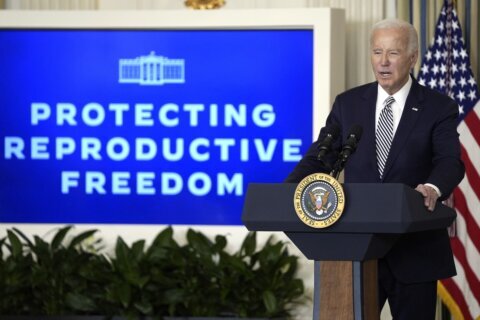In 2016, a machine apparently blocked a vote for Donald Trump. In 2018, a video supposedly showed votes being switched. In 2020, a video purported to show ballots being burned.
All wound up being false, and none of them showed what they claimed to show — but on those previous Election Days and the days after it, they cumulatively clocked up millions of views, clicks, and shares across social media.
This Election Day — when tens of millions of people vote across a continent and its territories overseas, not everything can go smoothly.
However, the overwhelming majority of Americans will perform their civic duty and vote without a problem. But in the age of social media and a concerted effort by some to undermine faith in American elections, it’s the irregularities that often get the attention.
There are different kinds of falsehoods that go viral on Election Day — this is where the difference between misinformation and disinformation comes into play. Misinformation is false information that the creator or sharer doesn’t necessarily know is false. Disinformation is the deliberate creation and sharing of false information.
Misinformation
An example of misinformation is a 12-second video that was shared widely on Election Day 2016. A man in Pennsylvania tweeted a video he said showed a voting machine not allowing him to vote for then-candidate Trump — it showed him repeatedly pressing a button for Trump, but the selection on the machine still read Clinton.
The video spread like wildfire on Twitter — being held up by some as evidence of a widespread issue of anti-Trump fraud in Pennsylvania. But it wasn’t. (Incidentally, Trump won the state)
CNN spoke to the man who posted the video. He explained the problem he was having with the machine was quickly resolved when he asked an election worker for help.
Election judges in another part of Pennsylvania explained that people who might have accidentally hit the button for one candidate first, would have to press that button again to deselect the candidate before choosing another one.
That’s exactly what appears to have happened to this man. As his tweet blew up and became the talk of the internet, he posted, “Everybody keep tryna tell me I said the machine was rigged & I never said that, it was just weird how it happened.”
Disinformation
Then there’s the more cynical stuff. Not simply a confused voter posting on social media and inadvertently causing more confusion.
On Election Day 2020, a video emerged online purporting to show a person setting fire to a bag full of ballots marked for Trump.
The video was a hoax and had been debunked by fact-checkers on Election Day, but it continued to circulate online and the following day the then-president’s son Eric Trump retweeted a version of the video that had about 1.2 million views.
While Eric Trump probably didn’t know the video was fake, the people who created and staged the video were engaging in the production of disinformation.
What to do?
Take a breath
The old maxim: “A lie can travel around the world and back again while the truth is lacing up its boots” is never more apt than on Election Day.
Videos, tweets, Facebook and WhatsApp posts alleging all kinds of stuff are going to pop up, and in a super-charged political environment we might want to believe them, even share them.
There’s going to be lots of false claims about the vote count process too. Some will say the fact that not all results are reported on election night is evidence of something fishy going on — election officials have repeatedly warned that in some cases the count process can take days, not hours.
Newsrooms will be on-hand to sort fact from fiction, but that can take time. When CNN looked into the Pennsylvania machine that supposedly wouldn’t allow a vote for Trump in 2016, we had to figure out where the video was filmed, try to talk to the election officials who work at that polling location, talk to state election officials, and talk to the person who posted the video themselves. All the while, the video was clocking up thousands of views.
What is different between 2016 and now? There is a far more sophisticated machine in place designed to undermine your trust in American elections. Thus, we might see a lot of disinformation this Election Day.
And remember …
None of this is to say there won’t be some irregularities and attempted fraud. This Election Day, CNN has literally hundreds of people dedicated to investigating voting issues.
When election officials mess up, we will report on it (like we did on Saturday in Georgia). When there are serious reports of fraud, we’ll report on that too (like we did on Thursday in Wisconsin).
The American election process is imperfect. There are tens of thousands of different cities, counties, and townships across the 50 states and multiple territories that play a role in administering elections, most of them do things a little differently. There are different machines to cast and count ballots, there are different local election laws and procedures. There is going to be confusion, there are going to be mistakes.
But there are also thousands of dedicated election officials and volunteers who work tirelessly to ensure our elections are free and fair. Don’t let a few viral videos undermine your trust in them.







